Some Info on Body Language

(Source)
Body language is far more important than you might think
Sometime ago I started reading about body language and movement and I prepared this article, which could be a proper introduction to what body language is.
Flora Davis, journalist for the famous female magazine “Glamour”, and the author of the book “Non-Verbal Communication”, states that only 35% of human communication is based on words. The rest is body movements, the tone of the voice, the posture, etc.
The creators of the documentary “The Secrets of Body Language” however, provide different information. According to the professionals interviewed for the documentary, only 7% is words. The remaining 93% is non-verbal communication. If the percentage is so high why would society ignore it? Based on the mentioned percentages, it seems that body language could be quite important in both the business world and in the personal relationships and the truth is very few people know how to control their body language.
Posture
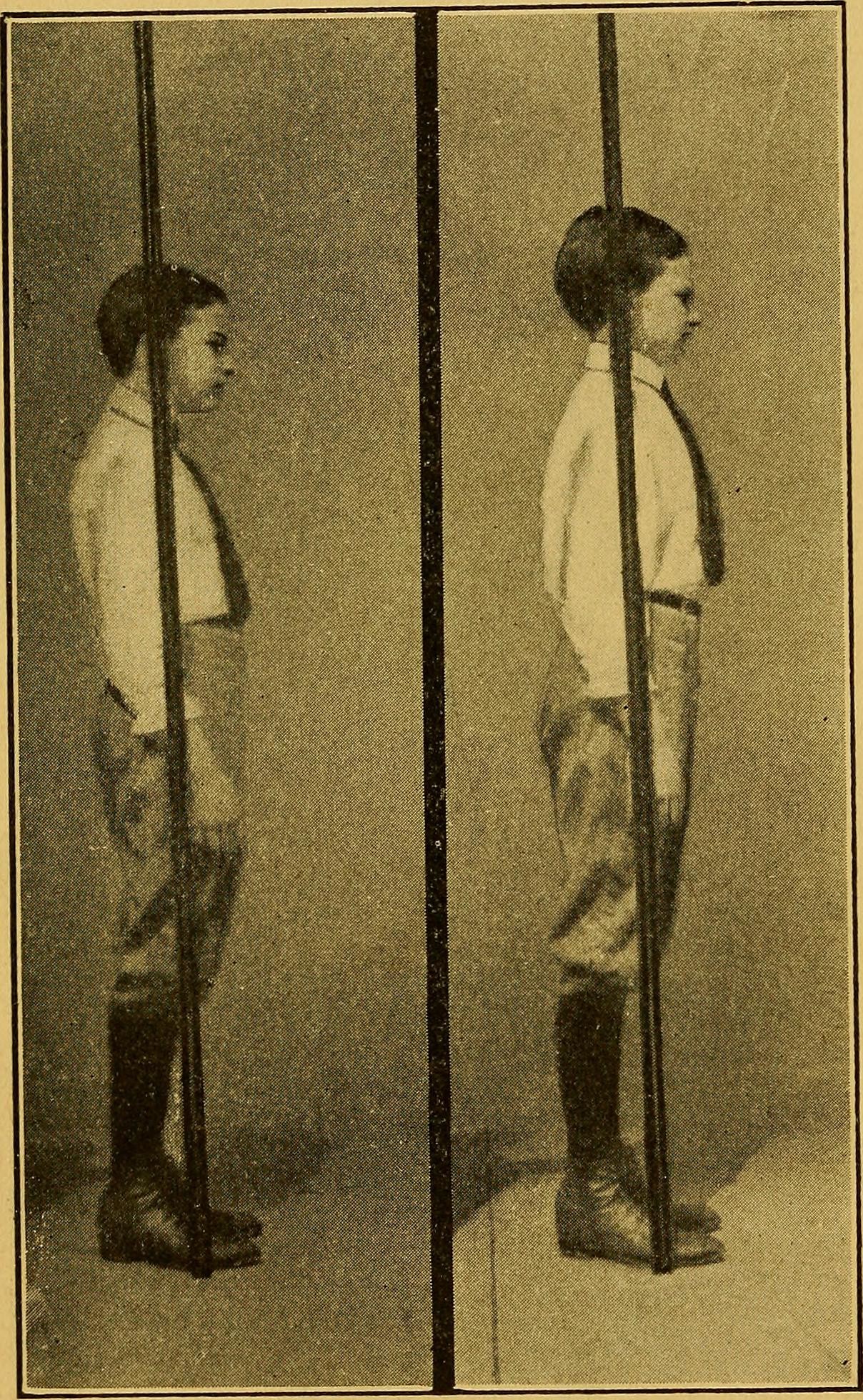
(Source)
Posture is one of the first characteristics to be noticed. If our shoulders are bent and our posture is not straight enough, we would appear as tired or lacking confidence. On the other hand, if we stand straight with high shoulders and our head and chin raised correctly, we would transmit the sensation of self-confidence.
Politicians, actors, and of celebrities, usually demonstrate good body language. They have often been trained to behave in a way which would persuade their fans or future electors to like them. As mentioned before, body language is quite essential, so it should never be ignored by an individual who wants to be famous and admired. A peculiar example of good body language provides one of the most influential world leaders: "president Putin". When Putin walks, he moves his shoulders a lot. His head is straight up and his movements are very firm. Putin’s body language transmits the feeling of power and dignity (Millar).
It becomes even more interesting when two leaders meet. The ex-president George W. Bush would usually do certain specific gestures when accepting other politicians at the White House or when paying a visit. Bush would place his hand on the shoulder of the other politician, no matter if this was Tony Blair or Vladimir Putin. Then Bush would usually tap the other person on the back. It was a symbol of power and supremacy. He wanted to demonstrate who had more power, who was “the boss” (Millar).
Body posture is always important. Little children are taught to sit straight and not to bend their backs.
Research reveals that the posture could mean much more than it appears. Albert Scheflen discovered that when two people share an opinion they would imitate each other’s postures. When they disagree, however, their postures would differ.
When various individuals meet they would often divide into different groups. Each group would sit or stand in the same position depending on the opinion of its members. When someone changes opinion they would also change their position.
When two or more people have to sit close in a small space, they would usually spread their arms and legs in order to form a sort of a barrier. Some psychologists would even imitate their patients’ posture in order to gain their confidence. Books and guides on how to win other people’s respect, friendship or love advise to imitate our interlocutor’s posture when having a conversation. The posture itself could also reveal a great deal of information about our past. If we have our shoulders lower than normal, then we are probably depressed or have personal issues (Davis 119).
Gestures

(Source)
It is not only the posture or the walk that matters. Professor William Condon discovered that as we talk our body “dances”. In other words, we move constantly as we speak: the hands and fingers, the head and eyes, everything maneuvers with a certain rhythm (Davis 127). The hands and arms speak their own language. Gesturing depends on the culture as well. An Italian would gesture more than a German, for example.
Investigation on gesturing begun in the 1940s and it was first conducted by David Effron. Effron wanted to verify previous conclusions made by the Nazis who believed that people’s gestures depended on the race. Effron observed Italian and Jewish immigrants in New York and he soon discovered that these two different cultures had very different gesturing manners. Effron also discovered that descendants form the second and third generation of immigrants would start losing the specific gesturing manners, typical for their cultures.
Hand gestures could reveal our feelings as well. Experts agree that self-touch gestures mean nervousness and insecurity. When we cross our hands in front of our chest, it would usually signify an imaginary barrier and trying to protect ourselves from the rest of the world. Shaking hands could express power or submissiveness. The best way to shake hands is to make it straight and firm (Millar). Politicians realize the importance of a hand shake. Many of them would try to be on the left side when shaking hands, so that they have “the upper hand”. It means that the person standing to the left could put their hand on the top of the other person’s hand. The upper hand demonstrates power; it means strength (Millar).
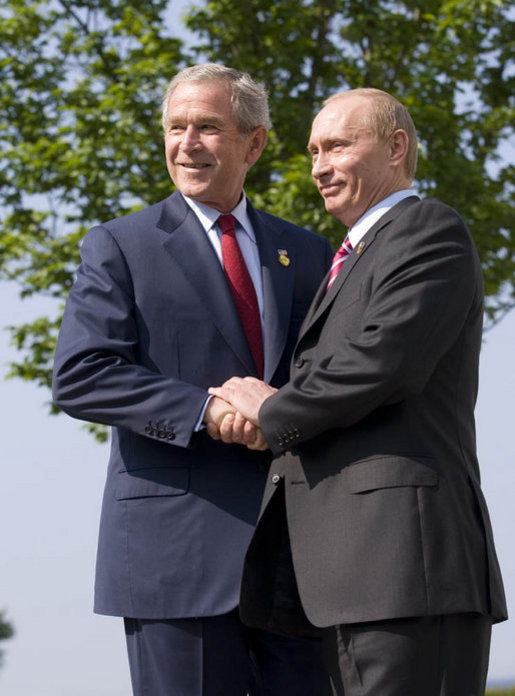
(Source)
An interesting case of nervous body language could be the media conference president Nixon gave during the Watergate scandal. On November 13, 1973 Nixon spoke in front of journalists in order to convince them of his innocence. He held his hands behind his back as to show he had nothing to hide. However, he held his wrist and was constantly moving his fingers, which is considered a sign of nervousness. He was holding himself away from the podium at which he was standing by placing his arms on both sides of it and moving his torso away. It seemed Nixon was trying to defend himself, knowing that the journalists were going to attack him with inconvenient questions. When Nixon made a firm statement about not being a liar, he immediately retreated back as to escape from what he had said (Millar).
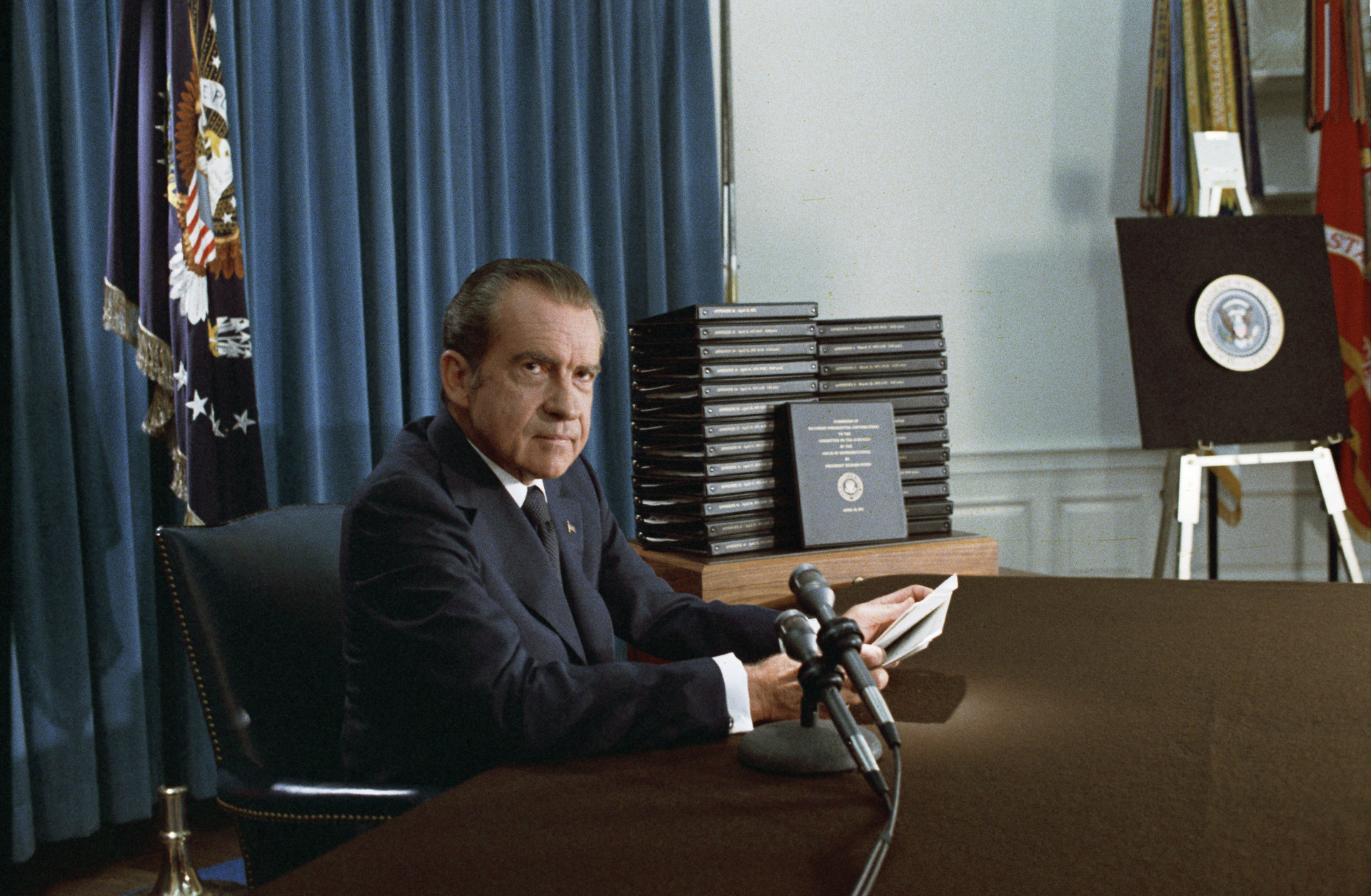
(Source)
The Face

(Source)
The human face could a great deal of information, especially if one knows how to read it. The scientist who has done the most important research on the topic is Paul Ekman. Ekman did a PhD in Clinical Psychology. Later, he dedicated his research on facial expressions and deceit. Ekman is the author of several very important books on the matter and nowadays he owns a small company which “produces training devices relevant to emotional skills, and is initiating new research relevant to national security and law enforcement” (Ekman).
Paul Ekman conducted several experiments that would show the importance of facial expressions. The human face has 43 muscles which enable it to exhibit a variety of expressions (Sherwood). A normal person would do almost all possible facial expressions in only two hours (Davis 63).
Ekman believes that “non-verbal behavior reveals how people feel, even when they wish to conceal their feelings” (Ekman 151). In 1969 Ekman along with Friesen suggested that “certain aspects of non-verbal behavior might escape censorship or serve to maintain deception more than others". The two proposed the idea that “when an individual is engaged in deception, his body, more than his face, is a source of leakage(i. e. the non-verbal act reveals a message otherwise being concealed)” (Ekman 152). Ekman and Friesen believe that people in the Western world are accustomed to control their facial activity more than their body behavior.
During the experimentation the two conducted, it was found that body language is being less frequently controlled. As for facial expressions, the individuals who participated in the experiments conducted by Ekman and Friesen, managed to express emotions and feelings not actually experienced. Even so, for most individuals it is significantly more difficult to hide micro-expressions. Micro-expressions are, as the body language expert Patty Wood explains: “the expressions that come out quickly form one’s emotional state before they even have time to think about them” (Millar). “The body, however, usually more truthfully reveals to the observer either how the person actually feels (leakage) or the fact that something is amiss (deception clues) (Ekman 287).
During their research Ekman and Friesen carried out a number of experiments. Twenty-two young nursing students were invited to participate in the following exercise: the subjects (the nurse students) were shown two movies. The first one of negative and stressful scenarios: treatment of severely injured patients, amputations and treatment of burns. The second movie was significantly more positive. The subjects were then interviewed by one and the same lady. The stress film “was used to arouse negative effect and the instructions require[d] that the subject convince the interviewer that the subject was seeing a pleasant, rather than a stressful film” (Ekman, Friensen, 289). The interviewer could not see the movies shown to the nurses. The nurses would watch first two positive films and describe their feelings to the interviewer. Then, the subjects would see a stressful film, but had to convince the interviewer that the movie had been positive as well. In the last part of the experiment, the nurse students had to see a stressful movie and then describe their actual feelings about it to the interviewer. All the sessions with all the subjects were recorded. Each session was then judged by previously selected individuals. The results of the experiment were very detailed and useful in the area of body language research. In his work “Lying and Nonverbal Behavior: Theoretical Issues and New Findings” Paul Ekman analyzes the results of the described experiment. Ekman believes the experiment he and Friesen conducted is very accurate. The results found are the following:
- In deceptive behaviour a real smile appears a lot less. Ekman denominates it “Duchenne’s smile”. Duchenne’s smile involves muscles around the eye in addition to the ones that pull the lips up (Ekman, 170). When the subjects were asked to describe their real feelings about the positive movies they had seen, the mentioned real smile appeared. On the contrary, when the future nurses had to lie about their feelings, smiles in which there are muscular traces of disgust, anger, fear, sadness, etc., were noticed (Ekman, 170).
- The pitch of the voices of the subjects went up when the subjects lied about their feelings. Ekman and Friesen completed their analysis on the subject’s voice by combining it with analysis of their facial expressions. In Lying and Nonverbal Behaviour: Theoretical Issues and New Findings Ekman suggests that “combining the facial measures and the pitch measures was the most productive way to discriminate hones from deceptive interviews” (Ekman 170).
The importance of Paul Ekman’s studies lies in the fact that he has managed to make significant discoveries in the field of body language, human emotions and facial expressions. Ekman’s research led him to the conclusion that there were seven universal facial expressions which could be seen in any part of the world, crossing all cultural boundaries. Ekman compared facial expressions of a tribe in Papua New Guinea and Japan with those of citizens of Western countries. To be more precise, the mentioned tribe is the “Fore linguistic-cultural group of the Southeast Highlands of New Guinea” (Ekman 155). The members of the tribe were living isolated from the rest of the world only five years prior to Ekman’s research. They were a Neolithic culture. In other words, their way of life was very simple and underdeveloped in comparison to the way of life of the rest of the world. Ekman affirmed that after conducting experiments with people from several countries plus members of the mentioned tribe, “the results were very clear, supporting our hypothesis that there is pan-cultural element in facial expression of emotion” (Ekman 156). All results were filmed just as the nurse experiment. Ekman’s concluded that the seven universal emotions are: happiness, sadness, anger, fear, surprise, contempt, and disgust (Millar). Ekman’s findings, however, raise some discussions.
Another distinguished scientist, Professor Ray L. Birdwhistell, states that “there are probably no universal symbols of emotional state” (Ekman 152). Birdwhistell’s research on body language was as important as Paul Ekman’s. Birdwhistell spent the period between 1942 and 1969 doing a research at the University of Toronto and Louisville, the State University of New York at Buffalo, as well as at Temple University (Pace). He became an expert in Kinesics. Kinesics is “the part of nonverbal communication that deals with postures of the body and movements of various parts of the body that play a role in communicating, particularly while people are speaking” (Pace).
Birdwhistell wrote several books dedicated to the topic of body language and non-verbal communication, including “Introduction to Kinesics” in 1952. In an interview in 1970 he stated that in his opinion: “There are no universal gestures. As far as we know, there is no single facial expression, stance or body position which conveys the same meaning in all societies” (Pace).
Birdwhistell is not only convinced that universal disposal of emotions does not exist, but that human beings acquire their physical aspect. When a child is born its face is not very different form the faces of other babies. With age, however, the characteristics of its face become more and more defined and specific. Birdwhistell also believes that people who live together such as married couples start to resemble each other in time. The same logic applies to physical traits such as beauty, ugliness, grace, etc. (Davis 46). These conclusions may seem strange but the logic behind them is simple: our physical aspect is not only in the face or the body, it is, as well, in the way we move, gesture, our posture, etc, and the sum of the letter, according to Birdwhistell, is acquired from parents, friends, and the rest of the surrounding individuals (Davis 46).
Form all of the facial expressions we exhibit one has particular importance. It is the symbol of happiness, affection, friendship, good education, etc. The famous author and lecturer Dale Carnegie dedicates a whole chapter to it in his book ”How to Win Friends and Influence People”. What is this particular facial expression? It is the smile. Carnegie, who had a great gift of speech, claimed the following about the smile: “Actions speak louder than words, and a smile says, "I like you, you make me happy. I am glad to see you. " That is why dogs make such a hit. They are so glad to see us that they almost jump out of their skins. So, naturally, we are glad to see them” (Carnegie).
According to experts, the smile is a sign of confidence and it is obvious that famous people along with politicians are well aware of it. A curious experiment conducted first at Princeton University and later repeated at Georgetown University demonstrated the importance of facial expressions and the smile in particular. Volunteering students were asked to make instant decisions between pairs of faces appearing on a screen. The faces were of candidates for the Senate, House and Governor in 2002 and 2004. The students had less than half a second to decide which face seemed more competent to them. After the experiment the volunteers had to explain the aspects which had influenced their choices. Most of the answers were “genuine” or “nice” smile. Eye contact was also mentioned as a factor. In both experiments (Princeton and Georgetown) an interesting pattern occurred. 70% of the chosen faces belong to people who were actually elected for office (Millar).
The Eyes
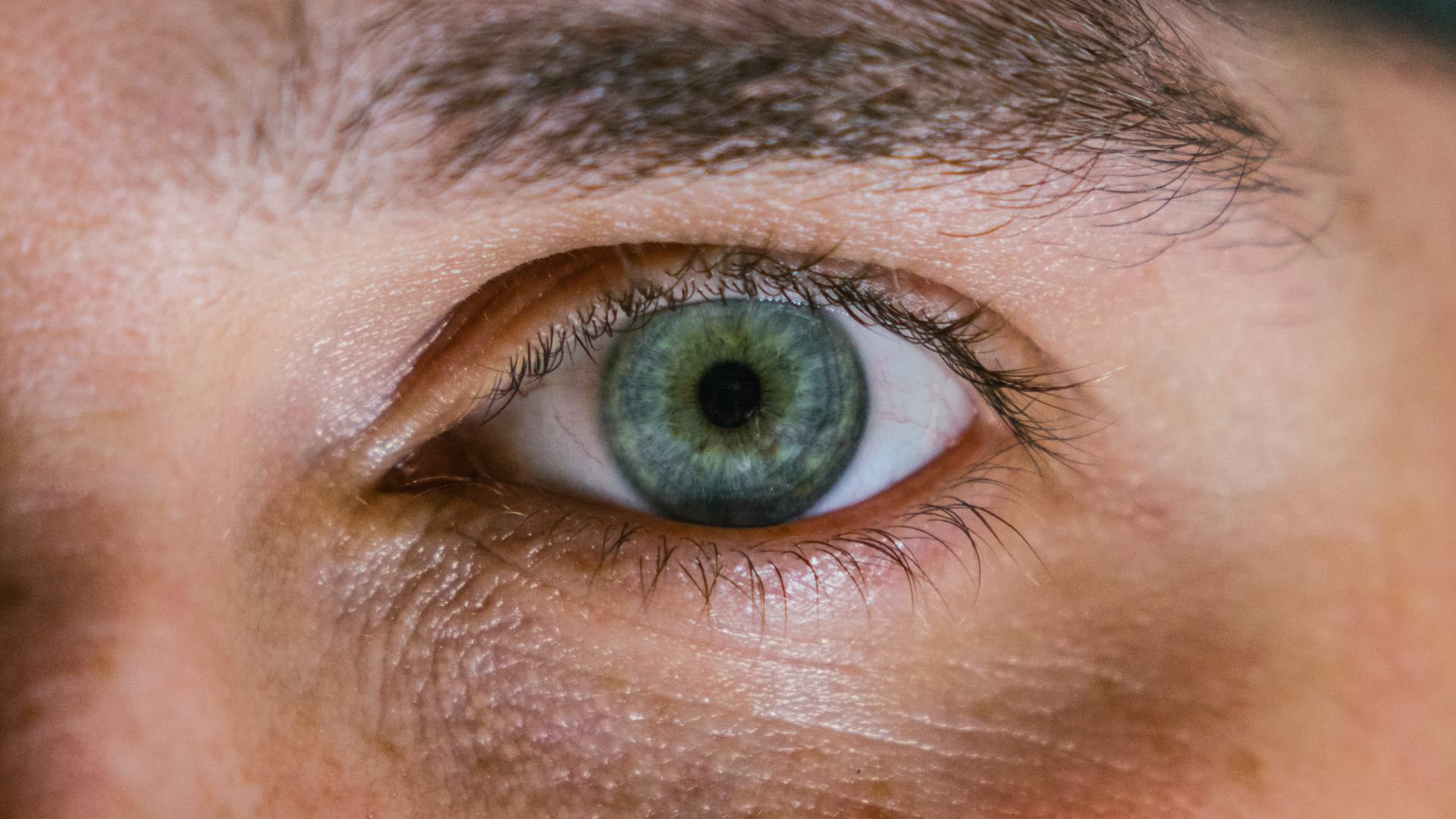
(Source)
The eyes are a window to the soul. It is a cliché but it is quite true that the eyes could reveal a great deal about the actual feelings of a person. The way we look at each other is an essential part of communication. Staring at someone could be taken as a proper example. If we see someone staring at us, we would consider it strange and unusual. If the staring continues we would feel nervous and uneasy. Continuous staring is perceived as aggressive in the Western world.
Experiments conducted with monkeys reveal that those animals feel similarly about being stared at. Ralph Exline, a psychologist at University of Delaware, did a research on the topic. When Exline approached the cages of the monkeys, watching at his feet, the animals would not react. When, however, he approached, watching the animals in the eye, the reaction of the monkeys was aggressive (Davis 77).
Other experiments demonstrate that recently born babies react to a set of eyes or objects similar to a set of eyes (Davis 79). Exline’s research exhibits other impressive results: when we like someone, we tend to look at them more often and for a longer period of time. Another amazing fact is that people who are more emotional and affective tend to look more at the others. The same applies to people who lack affection and are unconsciously searching for it (Davis 88). Other research suggests that women look at the others more than men (Davis 90).
The eyes do not lie. Police officers in the United States admit that when they suspect someone of a crime, they would first look at them in the eye. When a person feels distressed they would try to cover their eyes. An example regarding distress is discussed in the documentary "Secrets of Body Language". The famous pop star Britney Spears has had several difficult periods in her career. During these periods she would often appear with her sunglasses on even if it is dark. Experts agree that covering the eyes is a way to escape, to hide from the others.
In a number of cultures exists the notion of an “evil eye”. It is also called envious eye or invidious eye and it consists in the belief that someone could harm you, your family, your stock, etc. just by looking at you. The term “evil eye” exists in Italian (mal occhio), Spanish (mal de ojo), Hebrew (ayin ha'ra), etc. Such beliefs can only prove how important the eyes are in any given culture.
The Voice
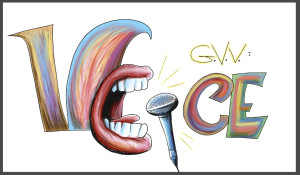
(Source)
According to experts about 38% of human communication comes from the voice. The tone, the pitch, the speed and the rhythm are all very important. Usually, a voice with a higher pitch is perceived negatively and provokes less credibility. The human voice becomes lower with age. Many politicians and actors decide to accelerate the process by undergoing special training. Female politicians have to overcome more difficulties in comparison with male politicians. A female voice affects men’s brains in a particular way. When men listen to a woman talking they accept her as very emotional due to her voice (Millar).
A peculiar example is Britain’s ex-Prime Minister Margaret Thatcher. As a young politician back in the 1960s Thatcher’s voice had a very high pitch. It changed in time and become much lower and better sounding. According to experts, Miss Thatcher trained her voice to achieve a lower pitch (Millar).
We are well aware of the importance of the human voice. Very often, when we hear someone speak in a higher voice we would perceive it as annoying and unpleasant. On the contrary, having a lower voice is thought to be sexy and pleasant and in the case of men, it is regarded as very manly. Some celebrities even become famous due to their deep voices. Experts agree that among American politicians, Presidents Obama and Reagan use their voices in a really good manner (Millar).
A special case: body language during courtship

(Source)
The first experiments and research regarding flirting were conducted by Doctor Albert Scheflen, expert in Kinesics, who worked with Birdwhistell. Scheflen analyzed movies of courtship. He reached the conclusion that people in love become more attractive (Davis 23). Dr. Albert Scheflen, in his article ‘Courtship behaviour in psychotherapy’, noted that, when a person enters the company of a member of the opposite sex, certain physiological changes take place. He found that high muscle tone became evident in preparation for a possible sexual encounter, ‘bagging’ around the face and eyes decreased, body sagging disappeared, the chest protruded, the stomach was automatically pulled in, pot-bellied slumping disappeared, the body assumed an erect posture and the person appeared to become more youthful in appearance. The ideal place to observe these changes is on a beach when a man and woman approach each other from a distance. The changes take place when the man and woman are close enough to meet each other’s gaze and continue until after they have passed each other, at which time the original posture returns (Pease 112).
The most significant courtship male signals are: passing a hand through his hair, straightening his tie or fixing his collar, etc. When flirting, men often turn their body towards the object of their interest (Pease 113).
Women, however, have richer and more exciting body language when attracted to a member of the opposite sex. A woman would touch her hair, put her hands on her hips, let her body point towards the male, increase her eye contact, smooth her clothing, etc. Another notable gesture is to expose her wrists and palms. Author Flora Davis mentions the same trait in her book “Non-verbal Communication”. Women who smoke cigarettes find it easier to perform this gesture (Pease 113).
Body language could often be misinterpreted. Interesting discoveries in the field of body language in regard of courtship demonstrate that men tend to confuse women’s friendliness signals with sexual signals.
Body language in different cultures
Body language is not universal in most of its part. It depends on the culture and the origin. Certain gestures are typical and have a positive connotation in certain cultures, whereas in others the same gestures could be considered an insult. The Anthropologist Edward Hall notes that Arabs find it completely normal to approach closely a person when they talk to them. It is also normal to look at the interlocutor in the eyes the whole time. In other cultures, mostly in the further East, it is considered a sign of rudeness to stare at another person while conversing. In North America it is thought normal to look in the eyes of the interlocutor but not for a long period of time (Davis 82). United States soldiers often have problems when working on missions in Arabian countries, since local citizens would approach very closely the solders when talking to them. That behavior is considered aggressive by the Americans. Sometimes even a fight would start based on misunderstanding and differences in body language (Millar).
When it comes to gestures, each culture has its proper specific gestures. Italians would usually gesticulate more than Jews, for example, as mentioned earlier in the text. Gesturing could identify a person as a member of a certain cultural group. French, for example, are less expressive than Italians but their gestures are more refined and elegant claims author Flora Davis (Davis 101).
Some cultures have not only specific gesture style, but their own “emblems”. Along with his research on universal facial expressions, Paul Ekman conducted experiments regarding emblems. In his work “Emotional and Conversational Nonverbal Signals” Ekman explains the meaning of emblems. “Emblems are the only true ‘body language’, in that these movements have a set of precise meanings, which are understood by all members of a culture or subculture. The term ‘emblem’ I borrowed from Efron (1968), the pioneer in studying cultural differences in body movements. Emblems are socially learned and thus, like language, culturally variable. A message may have an emblem in one culture, and no emblem in another cultural setting. Or the same movement pattern may have quite different meaning in different cultural settings” (Ekman, 39).
The Norm
Studying body language might be quite fascinating; however, there is an important aspect which should not be ignored. Each individual has their own personal body language and that is why body language experts “rely on an analytical process they call ‘norming’” (Millar). Norming expresses what is normal for a particular situation and for a particular person. In the case of politicians and celebrities it is rather easy to know the norm, since their lives are constantly exposed. Even when experts do not know a person’s norm they can often read their body language quite accurately. What they do is go back to the context of the given situation and think about what would be a normal reaction for that situation (Millar).
Body Language Training
Now-a-days politicians are well aware of the fact that an essential part of human communication is based on body language. When did they realize this? Back in 1960 Senator Kennedy and Vice-president Nixon appeared on the so-called “Great debate”: the first presidential debate shown on television. The two had to impress a large audience of 70 million people. Nixon had just undergone a treatment for an injured knee. He seemed ill; he was sweating in fort of the cameras and had rejected any makeup before appearing on air. Kennedy, on the other hand, agreed to have makeup on. He seemed healthier and better looking than Nixon. After the debate, according to poles, the TV audience preferred Kennedy. People who heard the debate on the radio, however, were in favor of Nixon ("The Kennedy-Nixon Presidential Debates, 1960"). After the Nixon-Kennedy debate politicians started realizing that body language really matters. 50 years later, it is normal for politicians to pay a great deal of attention to their body language and to even hire coaches to improve it (Millar).

(Source)
According to body language experts it is not difficult to distinguish coached moves. Usually, a coached move seems not as natural as normal. Also, it is common for politicians to first think and then show. One of the best tricks used by politicians is to create the sensation they are loved by many and that they personally know many people. One of the ways to achieve this illusion is, when speaking if front of an audience, to point at people form that audience. It seems as if the politician speaking has a large number friends and supporters who have come especially to hear his speech (Millar).
Body Language Technology
Body language gains a higher degree of importance, since it could be a clue to our real feelings or improve our image. Experts realize that reading body language could be quite useful and successful in marketing, in solving or preventing crimes, and so on. Special technology has been developed over the past years. Based on Ekman’s research on the seven basic emotions is the Face Reader. It is a facial recognition technology which classifies emotions according on Ekman’s discoveries. It is used in marketing research, food research, etc., since it can give information about people’s reactions to certain products, foods, ads, etc. Another interesting technology is LVA (Layered Voice Analysis). It could identify changes in the voice when a person is lying. That is why it is widely used by Federal Agencies (Millar).

(Source)
Experimentation
In relation to the topic being discussed and for the purposes of this research paper, a short experiment was conducted. It was inspired by the mentioned earlier Princeton exercise in which university students were supposed to choose between several couples of people and decide who would be more suitable for a certain job.
Description of the experiment
Nine university students were asked to see eight videos of politicians talking. The videos were divided into four groups. Each group consisted of video A and video B. In these videos candidates for the United States Senate were speaking in front of an audience. All the videos were shown without sound. In each video appeared one candidate who won the Senate elections and one who did not. The losing candidates had received a very low percentage on the elections. The videos were quite short. Every speaker appeared for no more than ten seconds. The university students had to decide who they thought would be more suitable for a certain job, who they would vote for if they had the chance. Since the videos had no sound, the students had to decide based only on what they were seeing. They were asked not to analyze the videos but to rather make an instant choice without thinking for a long period of time.
Hypothesis
Most of the students would pick the candidates who actually won the elections for the Senate. People are able to judge a person’s skills based on that person’s body language.
The Subjects
All nine individuals who took part in the experiment were university students aged between 22 and 27 years old. They come from three different Countries.
The Results
As predicted in the hypothesis, seven of the nine students chose three of the winning candidates. One student chose only the candidates who lost. The last student chose two candidates who won and two who lost.
Conclusion
Human beings are quite able to judge other individuals’ body language. They do not need to hear what a person is saying in order to decide whether they consider this person competent or not, sympathetic or not, and so on.
“Fake it till you make it”
Amy Cuddy, a Professor at Harvard Business School, explains in a speech given for TED how body language could not only represent humans in their social environment but also influence their behavior. In other words, if we stand in a certain position, considered to be powerful, then we would soon feel more powerful and potent ourselves. The same logic, found after certain scientific experimentation, applies to smiling and emotions. If we smile, then we immediately start feeling better and happier. Professor Cuddy explains that there are certain positions that signify power, potency, being the alpha individual. Those postures could be seen in the animal world. Usually, they involve expansion, looking bigger, and taking up more space. Similar patterns are observed in human behavior. Humans tend to do the same as animals: expand their bodies and their limbs, take up more space, and seem bigger.
What happens when animals feel powerless? They try to make themselves look smaller, take less space, so they basically close up. Similarly, humans take postures that make them look tinier, when they feel insecure. Professor Cuddy explains that when a human being has power or when they are feeling powerful, they take strong, open postures. This behavior is innate, it is not learned. Professor Cuddy mentions in her TED speech that there are several “high-power” postures, as well as several “low-power” ones. If we want to feel better before an important event, such as a job interview, for example, we could stand in a high power pose. It should make us feel powerful and more competent. If we, one the other hand, sit in a low-power pose before an event, such as a presentation, for example, we would feel, and thus feel worse, less competent and capable.

Source - Amy Cuddy
Body language in advertisement: content analysis based on the theoretical data
Body posture and movements in advertisement
Body language is essential in advertisement. A large number of ads rely on images, combined with some caption or a short text. Video ads have to transmit all the information that would promote their product in just a few seconds. So, how exactly is body language used in advertisement and what does it say?
Both men and women are being portrayed in advertisement. They are almost always very young, extremely beautiful, usually Caucasian, nicely dressed (or undressed), athletic, and quite seductive. Models are often being “improved” via image software, which delete all imperfections. They are made thinner, their skin smoothened, their hair shinier, their eyes more expressive. It is not only the perfect looks that ads use in order to sell. Body language plays its role in advertisement as well.
First, there are certain gender differences in the portrayal of women and men. Throughout history, women have been taught to be submissive, not to talk too much, to look good, to be always nice, and not to bother men. Even in the present days, after women have proved their capabilities and are often successful, the distinction between the genders is still alive. In the 21st century, women still receive lower payment compared to men, for the same type of work. Men, on the other, have always had the obligation to support the family and to be socially active. Not so long ago only men were allowed to vote. Not to mention that history knows very few women rulers before the 20th century. Even though today we see female politicians and businesswomen, and despite the female movements which started in the 20th century, we can still observe these typical female-male roles in our society. Females have to look good. Looks were quite important in the past, since the young girls had to find a proper husband. Having in mind that girls were not supposed to work, the main qualities they needed were beauty, submissiveness, and the ability to perform certain house work, such as cooking, cleaning, sawing, taking care of the children, etc. Obviously, women’s looks are still quite important when coming to attracting a partner and female beauty is still seen as a major if not the most important quality women should possess. Females might have proven their intelligence and their ability to be successful, but their looks are what is being judged first and maybe last. The female behavior, seen in advertisement is almost always related to the notion of being sexy, attractive, beautiful, and seductive.

(Source)
Models and celebrities, who appear in ads, usually give the viewer a seductive look. The eyes are often slightly shut as to represent ecstasy and joy. Some ads rely on the idea that bigger eyes seem more innocent and attractive, so some models have their eyes made bigger by specific image editing software.
Female postures are quite peculiar as well. Females often take the already mentioned “low-power” poses. Some of the examples seen along with the text show clearly how females in ads appear smaller and less powerful. In her famous series “Killing us Softly” Jean Kilbourne talks about women in advertisement. She states that women are being taught that they should seem sexy and innocent at the same time. Innocence is regarded as attractive. Women in ads often look helpless and vulnerable. Their body language speaks to the viewers, telling them indirectly that the female from the ad should be rescued. She is young, vulnerable, innocent, and very attractive. Women’s body language in advertisement often presents them as passive.
Sources:
- TED: A non-profit organization dedicated to conferences in different fields. It started back in 1984 and up to this date it is widely popular, offering useful and creative ideas to the wide audience. TED has its own website, where talks and discussions could be seen (TED).
- Carnegie, Dale. Quotes. Ref space. N. p., n. d. Web. 24 Oct. 2012.
- Davis, Flora. “Non-Verbal Communication. ” N. p. : n. p., n. d. Print.
- Ekman, Paul. “About Ekman. ”Paul Ekman. Paul Ekman Group LLC, n. d. Web. 24 Oct. 2012.
- - - -. Emotional and Conversational Nonverbal Signals. N. p. : n. p., n. d. Print.
- - - -. Lying and Nonverbal Behavior: Theoretical Issues and New Findings. N. p. : n. p., n. d. Print.
- - - -. “Universal Facial Expressions of Emotion. " ”California Mental Health Research DigestFall 1970. "
- Ekman, Paul, and Wallace V. Friensen. “Detecting Deception from the Body or Face. ”Journal of Personal and Social Psychology (1974).
- “The Kennedy-Nixon Presidential Debates, 1960. " ”The Museum of Broadcast Communications. "
- The “Lucky W. ” N. p.
- Millar, James, dir.Secrets of Body Language. ITV Productions, 2008. Film.
- Pace, Erik. “Prof. Ray L. Birdwhistell, 76; Helped Decipher Body Language. ” The New York Times. The New York Times Company, n. d. Web. 24 Oct. 2012.
- Pease, Allan. Body Language. 10th ed. London: Sheldon Press, 1988. Print. I. Title II.
- Sherwood, Susan. “How Many Muscles are in your Face? ” Curiosity. Discovery Communications.
Photo gallery
Content available in other languages
- Español: Información sobre el lenguaje corporal
- Polski: Trochę informacji o mowie ciała
- Français: Quelques infos sur le langage du corps
- Italiano: Qualche informazione sul Linguaggio del Corpo
Want to have your own Erasmus blog?
If you are experiencing living abroad, you're an avid traveller or want to promote the city where you live... create your own blog and share your adventures!
I want to create my Erasmus blog! →
















Comments (0 comments)